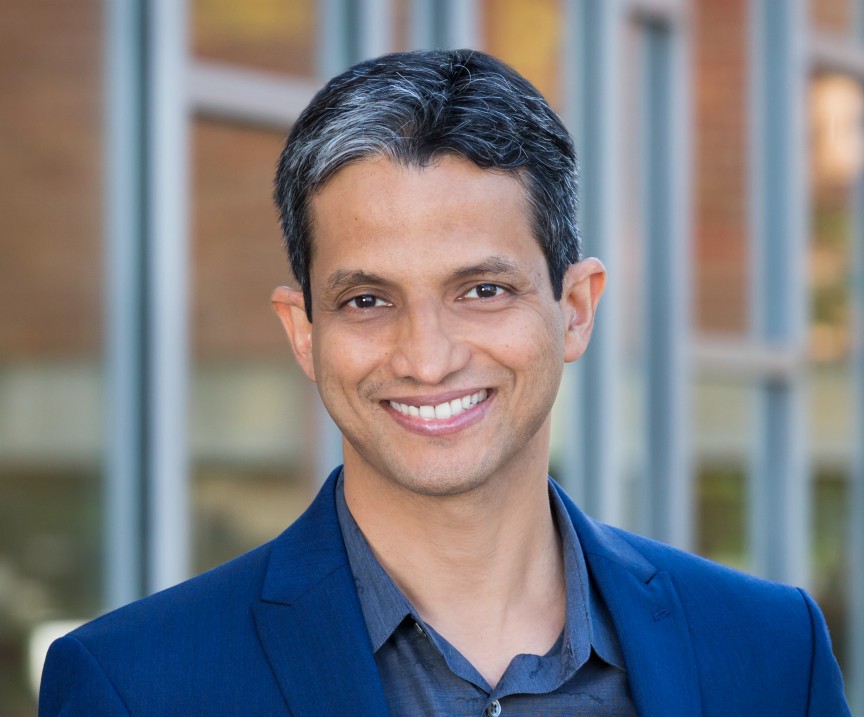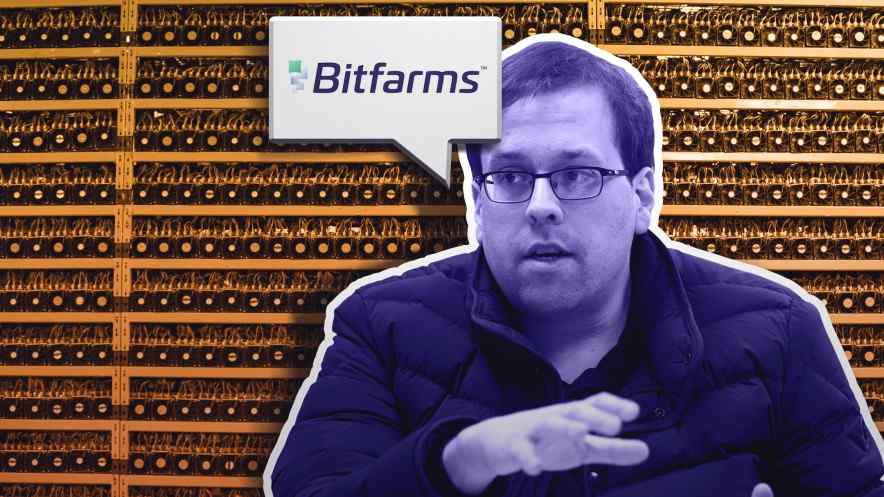Could Bitcoin Mining Stocks Be The Next Big Thing For Crypto Investors?
Nov 03, 2019, 10:04pm
Bitcoin mining companies like Hut 8 and Bitfarms are going public, offering a new and intriguing way to invest in crypto.
In today’s article, we speak with Wes Fulford, CEO of Bitfarms and Andrew Kiguel, CEO of Hut 8 about their companies’ recent decisions to become publicly traded in Canada. Bitfarms and Hut 8 are leaders in the Bitcoin mining industry, and their entrance onto Canadian stock markets marks a watershed moment for not only these companies’ own interests, but for the Bitcoin mining industry as a whole.
Not too long ago, Bitcoin mining firms raised capital without the aid of publicly issued stock, often through loans from banks, venture capital from angel investors and the now dreaded Initial Coin Offering (ICO). The reason for this is simple – very few stock exchanges wanted to list the shares of companies whose success was contingent on something as strange and seemingly obscure as Bitcoin. Until recently, Bitcoin and the greater digital economy had not been well understood. Even now, the value propositions offered by the digital economy are still difficult to evaluate for most investors, especially given the volatility of this asset class and the nascent technology being developed around it.
But, as Bitcoin mining and blockchain tech begin to carve out a more established industry, successful listings on stock exchanges are now more likely for blockchain and digital asset associated companies worldwide – It is clear the tide is changing in a big way. Curious investors are trickling in and gobbling up share in companies that derive their value directly from the digital economy, proving the digital asset class could offer big value to interested investors. What’s more, these public listings are offering traditionally-minded investors, fund managers, and institutional investors a path to exposure in crypto markets without directly holding digital assets, meaning more money in the crypto ecosystem, and more potential for growth. To put it plainly, Bitcoin mining is a big business and it is now becoming easier and more commonplace for investors to invest in the Bitcoin ecosystem, thanks to the public shares offered by firms such as Hut 8 and Bitfarms.
Andrew Kiguel and Hut 8
Yes, we believe that adoption will become more mainstream – especially the use of bitcoin as a store of value. All the traits and characteristics for bitcoin to flourish are there, Institutions like Fidelity and Goldman Sachs are taking notice. The biggest hurdle will be getting the bad players out. / Andrew Kiguel, Hut 8 CEO
As one of the co-founders, Andrew played a key role in the formation, structure, and financing of Hut 8. He brings knowledge and skill from his 21+ years in the finance industry to his role as CEO. Under Andrew’s leadership, Hut 8 has grown to become the world’s largest publicly traded cryptocurrency miner by market capitalization and size of operations. Prior to Hut 8, he served as Managing Director in investment banking at GMP Securities, with a focus on blockchain and technology. Andrew has extensive experience in providing investment banking services to numerous public and private entities, including raising equity and debt capital in excess of C$5 billion through his career.
Andrew’s company, Hut 8, is the world’s largest publicly traded Bitcoin miner. Hut 8 creates value for investors through low-cost production and appreciation of its Bitcoin inventory. The company offers investors a simple and safe way to get exposure to Bitcoin and is traded on the TSX:V under the ‘HUT’ symbol.
Hut 8 operates at approximately 963 peta hashes per second. The amount of BTC the company mines is dependent on competition on the Bitcoin network, as the amount of Bitcoin produced daily is relatively fixed. At current rates, Hut 8 represents over one percent of the overall global Bitcoin market.
Wes Fulford and Bitfarms
The markets don’t understand the value proposition and return profile in our business, and we are working hard to change this. / Wes Fulford, Bitfarms CEO
Wes manages corporate direction and strategy at Bitfarms, facilitating company activity in capital markets, sales, marketing, strategic alliances and business development. Prior to Bitfarms, Wes led the financial institutions and fintech investment banking practice for one of Canada’s largest financial institutions, Desjardins Group, and during his 12-year banking career has led over 100 successful financings and M&A transactions. Mr. Fulford is a CFA charterholder and has a B. Comm. (Honours) degree.
Wes’s company, Bitfarms, provides computing power to cryptocurrency networks such as Bitcoin, earning fees from each network for securing and processing transactions. Powered by clean and competitively priced hydroelectricity, Bitfarms operates four facilities in Québec, Canada which currently generate approximately 650 petahash per second of installed computational power. Bitfarms’ strong and experienced management team is comprised of veteran industrial-scale data center operators and capital markets professionals, focused on building infrastructure for the future by developing and hosting the ecosystem growing around blockchain-based technologies.
*Editor’s note:
A November 4 press release from Bitfarms announced that Bitfarms’ “mining hardware is expected to add approximately 153 petahash per second (“PH/s”)of new Bitcoin-focused hash power, increasing the Company’s installed computing power to approximately 813PH/s”
Bitrates Q&A
To help our readers better understand why Hut 8 and Bitfarms have gone public, and what it means for both companies to enter this next phase of their growth strategies, Bitrates.com has reached out to Wes Fulford and Andrew Kiguel for comment. Their answers provide a deep insight into the world of publicly traded Bitcoin mining stock and shine a light on what could be the next generation of financial investment for the cryptocurrency industry.
1. Why would a Bitcoin Mining operation want to go public? What are the advantages?
Wes Fulford, Bitfarms:
Our motivations are in-line with those of most public companies, to (1) access new sources of capital for future growth and development of our business, and (2) the expansion and diversification of our shareholder base and to provide liquidity for existing shareholders. We also wanted to differentiate our business vs. those that listed before us here in Canada. We want to be leaders in financial discipline with strong corporate governance. We listed on the TSX-V via a long-form prospectus which was cleared with the Ontario Securities Commission (a first in Canada) and we are audited by E&Y.
Andrew Kiguel, Hut 8:
Companies go public to access capital. To become a large industrial miner, significant amounts of capital are required. Hut 8 has just started trading on the TSX senior exchange – the first blockchain company to be listed on the senior board.
2. What kind of interest have both companies received from investors? How much capital have you raised?
Wes Fulford, Bitfarms:
To our knowledge, Bitfarms is the only public cryptocurrency miner to have executed a meaningful financing in 2019. In March of 2019 we closed a US$20 million debt financing through NYC-based lender Dominion Capital. With these proceeds we have added 30 MW of infrastructure, optimized current operations, and increased our computational power from 218 PH/s at the end of Q1 2019 to over 650 PH/s by mid-October 2019. Traditional equity markets have remained challenging for the past 12 – 18mths. Going forward, funding will be reserved for the best operators.
Andrew Kiguel, Hut 8:
Hut 8 has received significant interest from all over the world. From institutions like Fidelity to high net worth individuals. Hut 8 has raised $108 million in equity and US$25 million in debt. With close to 1000 phs and over 100MWs, we have the scale that attracts investors. Hut 8 was created as an alternative to buying bitcoin directly. This appeals greatly to institutions and individuals that want exposure, but aren’t willing to go through the education of buying it via hot wallets and storing it in cold storage.
3. What implications does the sale of shares have for your company? Will it foster growth or merely help maintain the company’s cash flow against the falling value of BTC?
Wes Fulford, Bitfarms:
Any future capital injections would be 100% deployed into our operational expansion. As a vertically integrated operator, we have full control of our fixed monthly G&A expenses. Gross mining margins (i.e. revenue less power expenses) from additional hardware and infrastructure development will essentially flow directly to EBITDA. We have the ability to begin generating cash flow on invested capital within ~4mths, which is much more attractive than the “traditional mining” industry. The markets don’t understand the value proposition and return profile in our business, and we are working hard to change this.
I feel it’s important to once again highlight the economics underlying our business. The common question surrounding “cost of production” is often an industry misconception. Miners will not maintain operations during sustained periods of negative economics. In Q4 2018 and Q1 2019 we saw BTC price declines met with lower network hashpower, as marginal, higher cost miners were forced to unplug. Mining difficulty fell alongside declining BTC prices, meaning miners that remained operating were producing more coins. Difficulty self-adjusts every ~14 days based on the time required to produce 2,016 blocks – it is a built-in protocol “governor” dictating daily coin production for each unit of computing power. Simply put, the marginal cost of mining is not static as it adjusts every 2016 blocks based on market conditions. Bitfarms continued to maintain positive Gross Mining Margins throughout the “crypto winter”. During the second quarter of 2019, our average break-even Bitcoin price was $2,259. This is calculated by dividing aggregate electricity costs by total coins mined over the respective period. We believe we are well positioned to compete long-term given our low-cost structure.
Andrew Kiguel, Hut 8:
It’s always a delicate balance when issuing equity between dilution and growth. Our goal is never to issue equity without having an accretive use of proceeds – so that the positive impact of equity is greater than the dilution created by issuing it.
4. Are there any interesting, big-capital “majority shareholders” looking to invest?
Wes Fulford, Bitfarms:
Our insiders already own a large portion of the Bitfarms’ shares outstanding. As a newly listed public company, we are working hard to diversify our shareholder base and to increase institutional holdings in our company.
Andrew Kiguel, Hut 8:
As a public company, we can’t disclose that type of information. However, we have several high profile investors such as Bitfury, Galaxy Digital and Fidelity.
5. How will investor funds be used to grow your company?
Wes Fulford, Bitfarms:
Bitfarms has large pipeline of renewable, surplus hydroelectricity within Quebec which will underpin our expansion objectives going forward. To date, we have constructed computing centres capable of running ~64MW of cryptocurrency mining hardware, and we have an additional 95MW of power available to us. As strong believers in Blockchain technology we are constantly evaluating other ways to expand our service offerings within the Blockchain ecosystem.
Andrew Kiguel, Hut 8:
Finding investors has been challenging with the volatility in bitcoin. However, the capital we have, has been used for growth by expanding our mining operations.
6. How will shareholders influence the direction of the companies?
Wes Fulford, Bitfarms:
We work closely with our key shareholders and we share the same vision for the company. We are building a business to support the digital economy and the opportunities are endless.
Andew Kiguel, Hut 8:
We always take time to listen to investors. Often they have good suggestions, sometimes their suggestions are less informed. Hut 8 has one large investor in Bitfury who owns 47%. As they are a large established blockchain entity, we’ll always take time to get their advice and expertise.
7. Are shares attracting the attention of mutual/hedge funds, market makers or institutional traders?
Wes Fulford, Bitfarms:
Overall cryptocurrency interest from Hedge Funds, Venture Capital and Private Equity firms has never been higher. As of October 1, 2019 these funds held US$19.1B in AUM, up ~130% year-over-year. We think there is great opportunity for us with these dedicated players. (Link)
Many of our peers raised funds at the height of the Bitcoin market in late 2017/early 2018. There has been a significant amount of capital destruction in the public markets, and there will be a lot of effort required to re-educate this investor base regarding the positive attributes of our business.
Andrew Kiguel, Hut 8:
Yes. Hut 8 has always been primarily held by institutional investors. Our first funding had over $1 billion of demand – but that was November 2017.
8. For investors looking to invest, how does investing in a publicly traded mining firm differ from investing in Bitcoin/Crypto itself?
Wes Fulford, Bitfarms:
Bitfarms is a blockchain infrastructure company. Like traditional hard rock mining companies, we monetize our production regularly and use the proceeds to reinvest in our operations. We are not an asset manager speculating on the price of digital assets through crypto inventories. Instead, we are an essential services company (i.e. validation and verification of global crypto transactions) which offers investors leveraged exposure to the underlying “commodity” (i.e. BTC). It is also easier to buy shares in Bitfarms than it is to buy and custody crypto directly.
Andrew Kiguel, Hut 8:
At Hut 8, we are bitcoin maximalist. Thus, we are different from other miners in that we hold an inventory of bitcoin. After paying for our fiat related costs, Hut 8 tries to hold onto its bitcoin for long term appreciation.
9. How correlated are the share prices to the value of BTC or other mined cryptos?
Wes Fulford, Bitfarms:
This industry is still in its infancy, meaning correlation has been quite high. This is not uncommon for companies that produce commodities. As the industry evolves, we expect share prices to trade on cash flow fundamentals and more traditional valuation metrics. Consistent, accurate and reliable financial reporting will be the driving force here.
Andrew Kiguel, Hut 8:
For most of 2018, Hut was approximately 90% correlated to the price of bitcoin. In 2019, it’s been closer to 75%.
10. Andrew, in 2018, HUT 8’s share price was 90% correlated to the price of Bitcoin, but in 2019, there is only a 75% correlation. What aspects of HUT 8’s operations are allowing its share prices to be decoupled from the value of Bitcoin?
Andrew Kiguel, Hut 8:
It has nothing to do with operations. Generally, when bitcoin goes up, so does interest in Hut 8. Conversely, when bitcoin drops. The reason we reduced our correlation to bitcoin was a result of one large seller earlier this year. That drove our share price down at a faster rate than bitcoin was falling at the time. At another time, we had many buyers. That had the impact of moving our shares up, even though bitcoin was falling. As a public company, we can’t control demand and supply. But, as a bitcoin company, the interest level is correlated.
11. Wes, Bitfarms and yourself appear to be extremely ambitious and driven, can you explain why you see so much potential in Bitfarms, and why you personally have chosen to work within such a nascent industry?
Wes Fulford, Bitfarms:
My move to Bitfarms was primarily driven by my confidence in our business model. Based on the merits of our operations and the strength of our team, Bitfarms was able to secure US$20M in funding during the peak of the crypto winter. 2019 has been our most successful year on record with the buildout of our new generation 30MW datacentre (+200% operation growth YTD) and successful TSX-V listing by way of a long-form prospectus cleared through the Ontario Securities Commission (a first for the Canadian cryptocurrency sector). I am a firm believer in the future of blockchain technology as well as Bitcoin as a decentralized store of value and medium of exchange. The opportunities evolving around this industry are endless.
12. Andrew, with “Bitcoin Maximalism” an integral part of the core ethos of HUT 8, it is safe to assume the company believes Bitcoin will continue to grow in popularity for years to come. In your opinion, what are going to be the biggest hurdles for the Bitcoin movement in the near future?
Andrew Kiguel, Hut 8:
Yes, we believe that adoption will become more mainstream – especially the use of bitcoin as a store of value. All the traits and characteristics for bitcoin to flourish are there, Institutions like Fidelity and Goldman Sachs are taking notice. The biggest hurdle will be getting the bad players out. Like the early days of the internet, many are seeking to make a quick profit from unsophisticated or new investors in the sector.
13. What are the strongest indicators that Bitcoin is, in fact, gaining momentum, despite prices stagnating around $10,000 USD?
Andrew Kiguel, Hut 8:
Main events that could drive the price are
1) the halving coming in May 2020 or so and
2) institutional adoption by established financial intermediaries like the NYSE.
Wes Fulford, Bitfarms:
I could spend hours summarizing major adoption initiatives and statistics. If you look at Bitcoin dominance (by market cap.) vs. all other cryptocurrencies, BTC is now sitting at 67.9%. The majority of institutional products for cryptocurrencies are centered around Bitcoin, including custody and trading solutions. In August, Coinbase CEO Brian Armstrong announced $200 – $400 million in weekly inflows from institutions. Bakkt will be offering the “first regulated options contract for bitcoin futures” on December 9, 2019. The number of cryptocurrency wallets continues to increase, and specialty institutional funds have grown to US$19.1B in crypto assets under management which we assume are heavily weighted towards BTC.
14. What are the best reasons for institutional investors to start adding cryptocurrency stocks to their portfolios?
Andrew Kiguel, Hut 8:
It has been demonstrated that adding 1-3% of bitcoin to a traditional portfolio enhances returns over the last 5-8 years. That’s the best reason. It’s an alternative asset class that isn’t correlated to the stock market or real estate. If bitcoin goes to $100,000, as a portfolio manager, you’re not doing your job if you don’t hold bitcoin.
Wes Fulford, Bitfarms:
Bitfarms is an attractive holding for those investors looking for leveraged exposure to an exciting new asset class. The rationale for this statement is similar to Question #8, previously provided and summarized hereafter. Bitfarms is a blockchain infrastructure company that is actively validating and verifying global cryptocurrency transactions. We are an essential service provider to network participants. We regularly convert our cryptocurrency rewards to FIAT in order to create more predictable returns on capital reinvestment (i.e. locking in our operating margins). We are not an asset manager with material crypto inventories used to speculate on pricing. Bitfarms is building data center infrastructure (a balance sheet asset) which can be utilized for other Blockchain computing or data-intensive technologies. In addition, we have a defensibility in our cashflows which is a result of our vertical integration efforts, power usage effectiveness and competitively priced hydroelectricity. In addition, our aggregate hardware efficiency is unmatched in the North American public markets at 13.3 petahash per megawatt.
From a portfolio allocation standpoint (drawing upon my earlier days as an asset manager), have a look at Van Eck’s recent presentation titled “The Investment Case for Bitcoin”. An interesting read where Van Eck highlights Bitcoin’s low correlation to traditional asset classes, meaning a small investment could significantly enhance cumulative returns while having minimal impact on portfolio volatility.
*Editor’s note:
According to the above mentioned November 4 press release from Bitfarms the company’s “overall operational efficiency [is] improving to ~14.3petahash per MW.”
Conclusion
Hut 8 and Bitfarms are operating businesses with predictable and consistent revenue in an industry with huge potential for growth, proving that the digital economy has finally hit a level of maturity consistent with an established business sector. With regard to the potential of Hut 8’s and Bitfarms’ respective stocks, it is clear the market is becoming receptive to these firms’ value propositions, and if Bitcoin adoption meets the expectations of Andrew and Wes, early investors in these companies (and others like them) could be in for substantial returns on their investments.
For anyone looking to get their feet wet in the world of crypto, Hut 8 and Bitfarms offer a palatable option for traditionally-minded investors who don’t want to directly obtain and hold digital assets. For those who are already deeply entrenched, Wes and Andrew represent the forefront of a forward-thinking movement that is moving the crypto industry away from the fringes of financial obscurity and into the mainstream of major markets.
Bitrates.com would like to thank Andrew and Wes for the thoughtful responses they have provided for this interview, as well as their respective teams at Hut 8 and Bitfarms.





